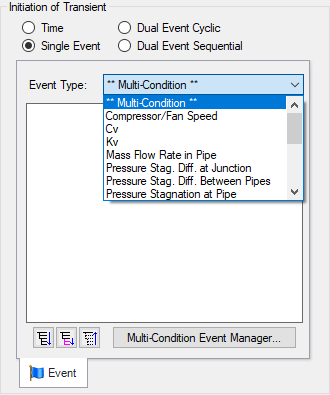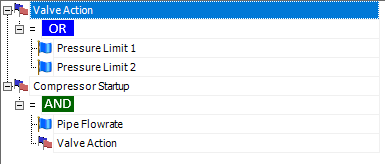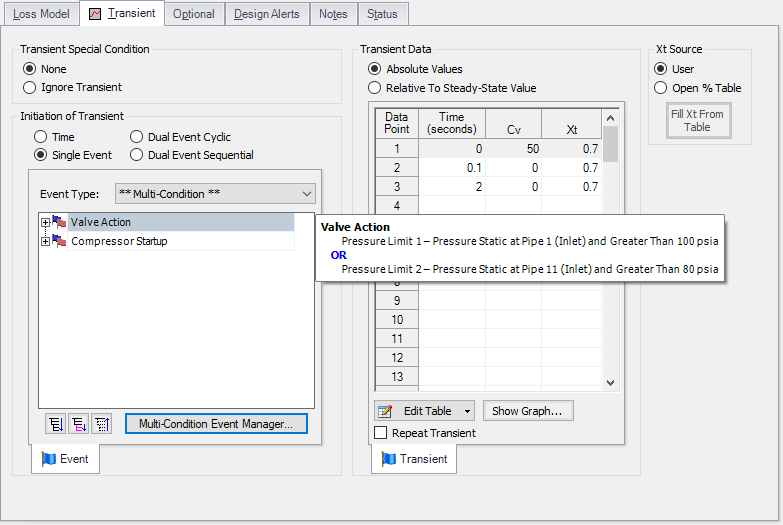Multi-Condition Events
One of the Event Types available is Multi-Condition. This feature allows starting a transient based on more than one parameter in the model.
For example, it may be desirable to open a valve when either of two pressures is exceeded.
To define a Multi-Condition Event, first select Multi-Condition as the Event Type from the junction's Transient tab.

Figure 1: Selecting Multi-Condition Event Type
Event Manager
Clicking Multi-Condition Event opens the Event Manager, where Simple Events and Multi-Condition Events can be defined.
The Event Manager defines events model-wide. That is, if the active scenario is changed, the same events will be accessible.

Figure 2: The Event Manager
Simple Events
The Event Manager allows for the definition of Simple Events and Multi-Condition Events.
Simple Events are nearly identical to normal (non Multi-Condition) events defined in a Transient tab. They require a Parameter, Condition, Value, and Object as well as a unique Name.
Clicking "Create Simple Event..." adds a new Simple Event to the list with default values. These values should be updated with the desired values and applied with the Update button. Simple Events can be duplicated to help reduce repeated data entry.
Multi-Condition Events
Multi-Condition Events are a collection of other Events with a logical condition applied to them. When creating a new Multi-Condition Event, a prompt for a Name appears. After entering a name, an empty Multi-Condition is created with a default logical condition of AND. This logical condition can be:
-
AND - All of the Simple Event conditions must be met for the Multi-Condition Event to trigger.
-
NOT - The Multi-Condition Event triggers when none of the conditions evaluate to true.
-
OR - One or more of the Simple Event conditions must be met for the Multi-Condition Event to trigger.

Figure 3: Conditional logic for Multi-Condition Events
Any number of Simple Events can be added to a Multi-Condition Event as Sub-Events:

Figure 4: Multiple Events
Complex Multi-Condition Events
More complex events can be defined by adding one or several Multi-Condition Events as Sub-Events to another Multi-Condition Event.

Figure 5: A Multi-Condition Event containing another Multi-Condition Event (trigger if Limit 3 AND (Limit 1 OR Limit 2))
Using Multi-Condition Events
All Multi-Condition Events are listed in the junction's Initiation of Transient section. Only one Multi-Condition Event can be selected as the Initiating Event for any particular Transient Data.

Figure 6: The selected Multi-Condition Event controls the trigger of the Transient Data. Hovering over the Multi-Condition events here shows an expanded definition of the event
Related Blogs



